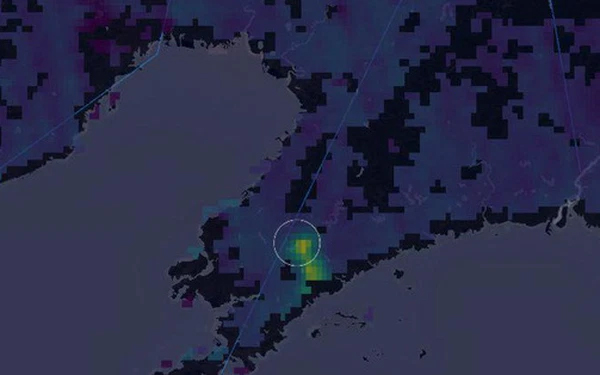A large amount of methane, a potent greenhouse gas that is a major contributor to global warming, has been detected by satellites near a gas pipeline in northeastern China.
Data collected from satellites indicate that massive emissions have appeared in Liaoning Province, close to the pipeline of the China National Petroleum Corporation, which connects the Dalian LNG station to Shenyang on October 20.

This emission plume appeared near the pipeline of the China National Petroleum Corporation
Analysis of data from the European Space Agency has led Kayrros SAS to estimate that the emission plume is being produced at a rate of 107 tons of methane per hour.
This finding was part of a global effort to curb the accelerating emissions of methane during the COP26 event. Over 100 countries have signed commitments to reduce greenhouse gas emissions by 30% by 2030. However, some of the world’s most polluting countries, such as Russia, China, and India, have not participated in this treaty.
If the emissions continue for an hour at the rate estimated by Kayrros, the methane plume would have a short-term climate impact equivalent to the annual emissions from more than 5,000 cars in the UK.
The China National Petroleum Corporation, also known as PipeChina, and the Ministry of Ecology and Environment of China have not commented on this discovery.
Last week, when asked about the reasons for refusing to participate in the global methane treaty, Chinese Foreign Ministry spokesperson Wang Wenbin stated that China values controlling greenhouse gases beyond CO2. The country is willing to work with other parties to promote global cooperation in reducing methane.
In March, China’s most recent five-year plan committed to tackling methane for the first time, a gas that retains heat about 80 times more effectively than carbon dioxide in the first 20 years after it is emitted.
Reducing emissions under the Global Methane Pledge is likely the most important action that governments can take to maintain the goal of limiting global warming to 1.5 degrees Celsius above pre-industrial levels.


















































